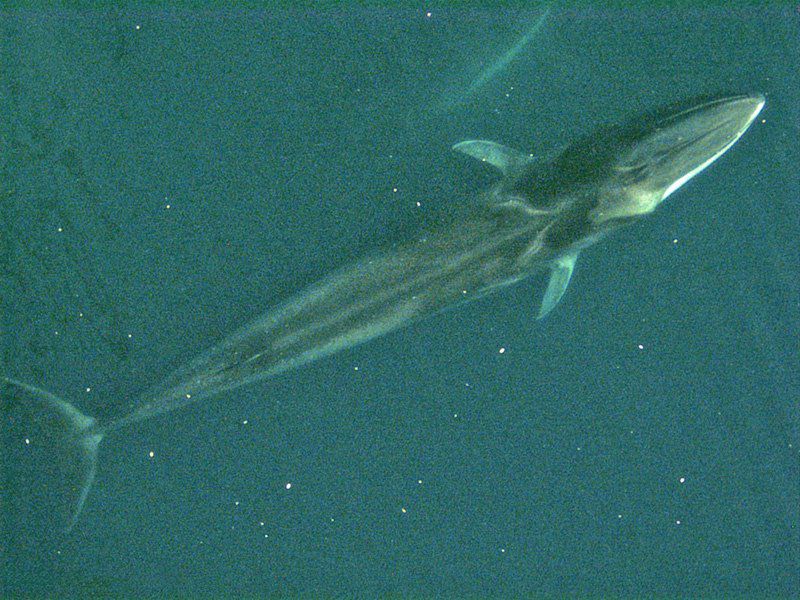-
 Trypanosome
Trypanosome
-
 Larva
Larva
-
 Crust
Crust
-
 Aldohexose
Aldohexose
-
 Complexing reaction
Complexing reaction
-
 Retina
Retina
-
 Apache
Apache
-
 Peas
Peas
-
 Onychomycosis
Onychomycosis
-
 Acusia
Acusia
-
 Chloasma
Chloasma
-
 Quinoa
Quinoa
-
 Viscosity
Viscosity
-
 Articular cartilage
Articular cartilage
-
 Triangle galaxy
Triangle galaxy
-
 Endoderm
Endoderm
-
 Unfractionated heparin
Unfractionated heparin
-
 Angioplasty
Angioplasty
-
 Monoculture
Monoculture
-
 In vitro fertilisation
In vitro fertilisation
-
 Soyuz-Fregat
Soyuz-Fregat
-
 Germanium
Germanium
-
 Syenite
Syenite
-
 cDNA
cDNA
-
 Monoethanolamine
Monoethanolamine
-
 Degassing
Degassing
-
 Surfactant
Surfactant
-
 Puddling
Puddling
-
 Antibiotic for acne
Antibiotic for acne
-
 Newbie
Newbie
Rorqual
Common rorqual (Linnaeus 1758) - Balaenoptera physalus
- Order: Cetacea
- Family: Balaenopteridae
- Genus: Balaenoptera
- Size: 15 to 20 metres
- Weight: 60 to 70 tonnes
- Life span: 90 years
IUCN conservation status: EN endangered
Description of the common rorqual
The common rorqual is the second largest animal living on the planet. Rorquals have very long bodies with V-shaped heads. Their dorsal colouring is grey to dark grey, while their sides are darker. The ventral part and the underside of the pectoral fins and the caudal fin are white. The cetacean has asymmetrical angular patterns on the lower jaw. A falciform dorsal fin sticks out from the back along two third of the body length, starting from the mouth. The pectoral fins are triangular and slightly curved, while the caudal fin is crescent-shaped. The rorqual has between 56 and 100 ventral folds at the throat. The head has a longitudinal crest in front of the blowhole. Each side of the upper jaw has between 300 and 400 baleen which are 75 cm long.
Habitat of the common rorqual
The areas in which the common rorqual lives are quite cosmopolitan. Rorquals are found in all of the world's oceans and seas, from the tropics to the Arctic Circle. Rorquals are not found in polar waters, the Red Sea, the Persian Gulf, the eastern Mediterranean Sea and the Baltic Sea. Rorquals prefer the deep water located beyond the continental shelf.

A young rorqual. © Alcide 55 G. Bouchard, GNU FDL Version1.2
Behaviour of the common rorqual
As opposed to the blue whale, the common rorqual is gregarious and lives in pods of six to ten individuals. Some groups may include over one hundred individuals. It vocalises using low frequencies and its repetitive song reaches an acoustic intensity of between 184 to 186 decibels. The cetacean habitually migrates between the areas where it feeds and the area where it reproduces and gives birth. The females lead the groups in these long voyages. However, some individuals do not migrate and remain in the same area, feeding in the deep water. There is very little genetic exchange between populations in the Atlantic and populations in the Mediterranean. The common rorqual can cover a distance of 300 km per day at an average speed of 37 km/h. It exhales every 30 to 60 seconds several times after resurfacing. It can dive up to 600 metres for almost 20 minutes. Its method of propulsion is identical to that of other members of the family. It proceeds by vertical movements of the caudal fin. This swim paddle, which can have a surface area of several square metres, gives it a comfortable cruising speed.
Reproduction of the common rorqual
Gestation lasts eleven months, after which the female gives birth to a single calf over 6 metres long, weighing between 3 to 4 tonnes. A calf is weaned after six or seven months when it has doubled its size. It reaches sexual maturity between 5 and 10 years of age, but only reaches physical maturity between 25 and 30 years of age.
Diet of the common rorqual
The common rorqual feeds on krill, small fish and cephalopods, which it filters through its baleens. In order to feed it lunges into a dense shoal of krill at a speed of about 11 km/h, keeping its mouth wide open. It swallows 70 cubic metres of water, which it rejects while trapping the crustaceans with its baleens. Each skim may provide 10 kg of food, and the cetacean absorbs nearly 1,800 kg per day. To meet its energy needs, the common rorqual must spend at least three hours a day searching for food.
Threats to the common rorqual
Like other whales, the common rorqual has been heavily hunted, to the point that the International Whale Commission has had to protect North Pacific populations since 1966. Currently, group populations are estimated at around 40,000 in the Northern hemisphere and between 15 and 20,000 in the Southern Hemisphere. Threats to the common rorqual include collisions with ships and noise from human activities that disturb cetacean sonar. They are also sensitive to heavy metals and red sludge.
 Photo of a common rorqual. © Sabine's Sinbird, NOAA, public domain
Photo of a common rorqual. © Sabine's Sinbird, NOAA, public domain
Latest
Fill out my online form.



